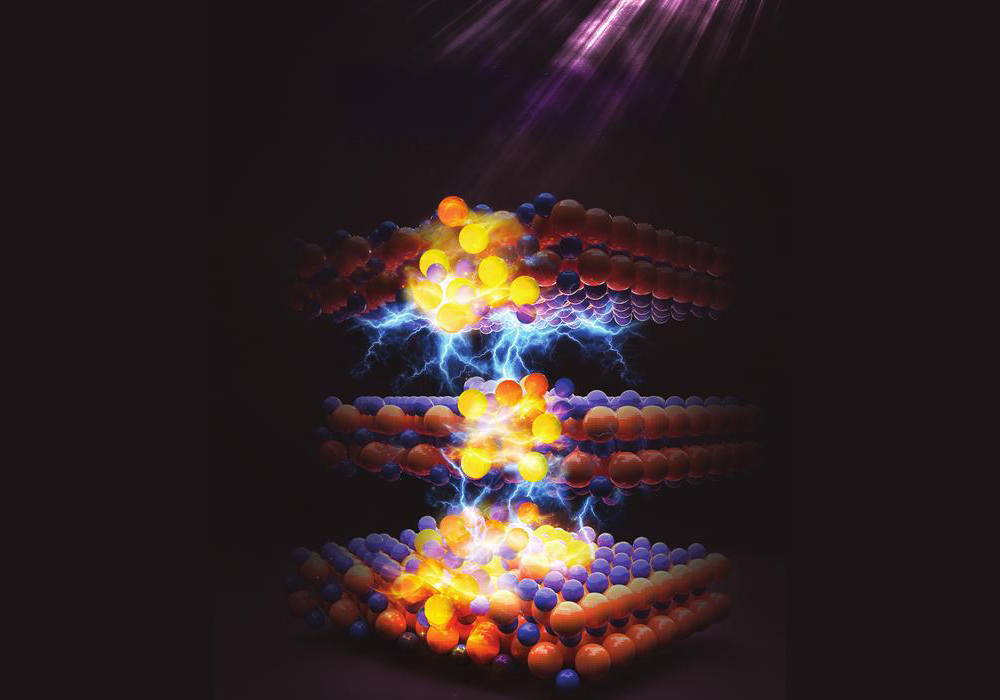![]()
[Image above] The Interact Lab at the University of Sussex (U.K.) has developed a mid-air reflective display using levitated and electro-rotated Janus objects, which have different physical properties on different facets. Credit: Interact Lab; YouTube
Electronic displays as we know them are ever-evolving.
Flexibility will be the new gold standard. Advanced materials like graphene are changing the future of flexible electronic displays. Researchers from the Korea Advanced Institute of Science and Technology recently developed what they say is an ideal electrode structure composed of graphene and layers of titanium dioxide and conducting polymers, resulting in highly flexible and efficient organic light-emitting diodes (OLEDs).
Ultra-transparency blends style and functionality for consumers. Panasonic recently debuted its OLED-embedded transparent glass TV. The design incorporates a glass panel with an embedded mesh OLED screen that features extremely sharp picture quality when it’s powered on, yet goes completely transparent when it’s turned off.
‘Floating pixels’ are the next frontier. Researchers at the Universities of Sussex and Bristol in the U.K. have developed a new technology that effectively turns tiny, multi-colored spheres into real-life pixels, “which can form into floating displays or bring computer game characters to life as physical objects,” according to a University of Sussex press release.
The technology uses soundwaves to lift many tiny objects at once before spinning and flipping them using electric force fields—a completely new way to represent digital information in a physical space, the release explains.
“We’ve created displays in mid-air that are free-floating, where each pixel in the display can be rotated on the spot to show different colors and images,” Sriram Subramanian, professor in the University of Sussex’s School of Engineering and Informatics, says in the release. “This opens up a whole new design space, where computer and mobile displays extend into the 3-D space above the screen.”

Credit: Interact Lab; YouTube
A series of miniature ultrasound speakers create high-pitched and high-intensity soundwaves that are inaudible but forceful enough to cause the pixels to “float” and suspend in midair.
The pixels get their electrostatic charge from a thin coating of titanium dioxide, which allows them to be “manipulated in mid-air by changes to an electric force field, created by tiny electrodes,” the release explains.
“The most exciting part of our project is that we can now demonstrate that it is possible to have a fully functioning display that is made of a large collection of small objects that are levitating in mid-air,” Deepak Sahoo, researcher in human-computer interaction at the University of Sussex, says. “JOLED could be like having a floating e-ink display that can also change its shape.”
The team presented their research at the 29th ACM User Interface Software and Technology Symposium in Tokyo, October 16–19—and the researchers say this technology could open up the possibility for some pretty interesting applications.
“Traditionally, we think of pixels as tiny color-changing squares that are embedded into our screens. JOLED breaks that preconception by showing physical pixels that float in midair,” Asier Marzo, researcher in the Department of Mechanical Engineering at the University of Bristol, says. “In the future we would like to see complex three-dimensional shapes made of touchable pixels that levitate in front of you.”
The study, published in ACM Digital Library, is “JOLED: A mid-air display based on electrostatic rotation of levitated Janus objects” (DOI: 10.1145/2984511.2984549).
Author
Stephanie Liverani
CTT Categories
- Electronics
- Material Innovations

